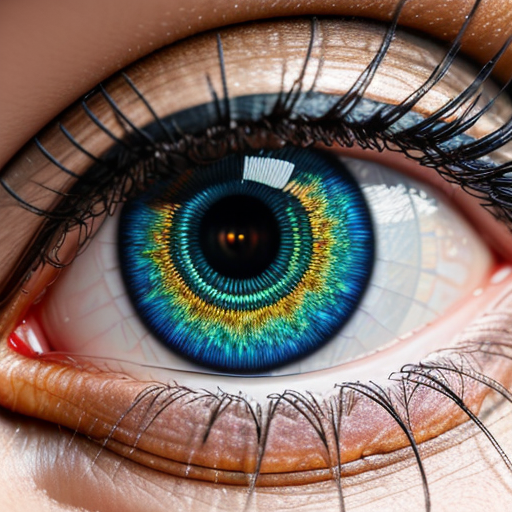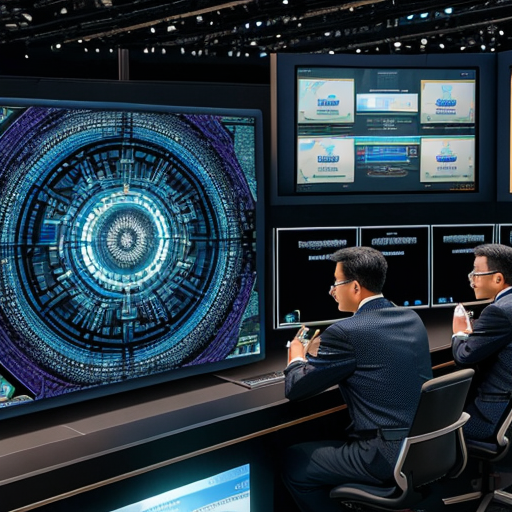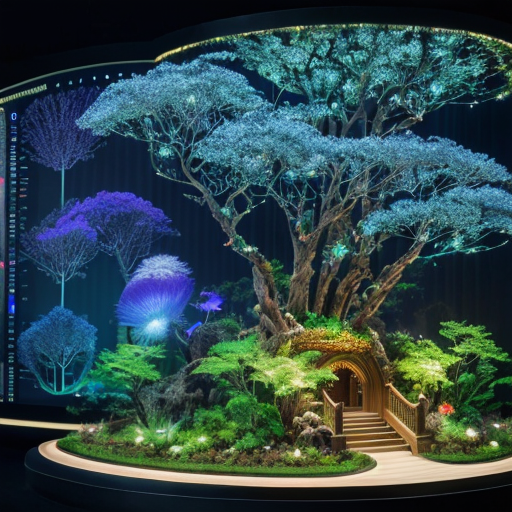Table of Contents
Introduction
In the ever-evolving landscape of artificial intelligence (AI), one remarkable trend is taking center stage: the increasing use of generative AI in analytics. This groundbreaking technology is reshaping the way organizations make decisions and fueling innovation at an unprecedented pace. As we dive into the latest developments in generative AI, we will explore how it is revolutionizing various industries and becoming more accessible to a wider range of individuals and organizations.

Generating synthetic data for AI training
Generative AI models can be used to generate synthetic data that is statistically similar to real-world data. This synthetic data can then be used to train AI models in a variety of ways:
- To train AI models on datasets that are too small or too expensive to collect. For example, a company might want to train an AI model to predict customer churn, but they may not have enough real-world data to do so accurately. Generative AI can be used to generate synthetic data that represents the different types of customers that the company has. This synthetic data can then be used to train an AI model that is more accurate and reliable.
- To train AI models on datasets that are sensitive or private. For example, a hospital might want to train an AI model to diagnose diseases, but they may not be able to share their patient data with other organizations. Generative AI can be used to generate synthetic patient data that is statistically similar to real-world patient data. This synthetic data can then be used to train an AI model without compromising patient privacy.
- To train AI models on datasets that are not yet available. For example, a company might want to train an AI model to predict customer demand for a new product that they have not yet launched. Generative AI can be used to generate synthetic data that represents the potential demand for the new product. This synthetic data can then be used to train an AI model that can help the company to make better decisions about product development and marketing.
Testing and validating hypotheses
Generative AI can also be used to test and validate hypotheses in a variety of ways. For example:
- A company might want to test a new marketing campaign before they launch it. They could use generative AI to generate synthetic customer data that represents the different types of customers that they target. They could then use this synthetic data to test the effectiveness of their new marketing campaign in a simulated environment. This would allow them to make changes to the campaign before they launch it, and to avoid wasting money on an ineffective campaign.
- A scientist might want to test a new hypothesis about how a drug works. They could use generative AI to generate synthetic data that represents the effects of the drug on different types of cells and tissues. They could then use this synthetic data to test their hypothesis in a simulated environment. This would allow them to make progress on their research without having to conduct expensive and time-consuming experiments on real-world patients.

Overall, generative AI is a powerful tool that can be used to improve analytics in a variety of ways. By generating synthetic data and testing hypotheses, generative AI can help organizations to make better decisions and to innovate more quickly.
Here are some specific examples of how generative AI is being used for analytics today:
- A financial services company is using generative AI to simulate different economic scenarios and to assess the potential risks to their business.
- A healthcare company is using generative AI to generate synthetic patient data for training AI models to diagnose diseases and to develop new treatments.
- A retail company is using generative AI to simulate customer behavior and to optimize their product placement and marketing campaigns.
These are just a few examples of the many ways that generative AI can be used for analytics. As generative AI continues to develop, we can expect to see even more innovative and groundbreaking applications in the future.
Multi-modal generative AI: A game changer
Multi-modal generative AI is a type of generative AI that can generate content in multiple formats, such as text, images, and audio. This makes it more versatile and useful for a wider range of applications than traditional generative AI models.
One of the most exciting applications of multimodal generative AI is in the creation of realistic virtual worlds. For example, multimodal generative AI can be used to create virtual worlds that are indistinguishable from the real world in terms of their visual and auditory realism. These virtual worlds can be used for a variety of purposes, such as gaming, training simulations, and even education.
Another promising application of multimodal generative AI is in the marketing and advertising industries. Multimodal generative AI can be used to create realistic and engaging marketing materials, such as product images, videos, and personalized customer experiences. This can help businesses to attract more customers and to increase sales.
In addition to the applications mentioned above, multimodal generative AI has the potential to revolutionize many other industries, including healthcare, finance, and manufacturing. For example, multimodal generative AI could be used to develop new medical treatments, to create more accurate financial models, and to design more efficient manufacturing processes.
Multi-modal generative AI is a rapidly developing field with the potential to transform many aspects of our lives. It is still early days, but the potential applications of multi-modal generative AI are vast and exciting.

Here are some specific examples of how multimodal generative AI is being used today:
- Gaming: Multimodal generative AI is being used to create realistic and immersive virtual worlds for gaming. For example, the video game company NVIDIA is using multimodal generative AI to develop a new type of virtual reality game that is indistinguishable from the real world in terms of its visual realism.
- Training simulations: Multimodal generative AI is being used to create realistic training simulations for a variety of industries, including healthcare, military, and transportation. For example, the US military is using multimodal generative AI to develop training simulations for soldiers that prepare them for real-world combat situations.
- Marketing and advertising: Multi-modal generative AI is being used to create realistic and engaging marketing materials for businesses. For example, the e-commerce company Amazon is using multi-modal generative AI to create personalized product recommendations for customers.
These are just a few examples of the many ways that multi-modal generative AI is being used today. As multi-modal generative AI continues to develop, we can expect to see even more innovative and groundbreaking applications in the future.
Multi-modal generative AI is one of the most exciting new technologies in development today. It has the potential to change the way that we live, work, and play in many ways. It would be exciting to see how multi-modal generative AI is used to create new and innovative products and services in the years to come.
Creative text generation
One of the most exciting trends in generative AI is the development of models that can generate creative text content, such as poems, code, scripts, and musical pieces.
These models are typically based on transformer architectures, which are a type of neural network that is well-suited for processing sequential data, such as text. Transformer-based models are trained on massive datasets of text and code, which allows them to learn the statistical relationships between words and phrases.
Once trained, these models can be used to generate new text content by providing them with a prompt or a starting point. For example, you could prompt a model to write a poem about a specific topic, or to generate a script for a short film.

The pinnacle of creativity
Generative AI models like GPT-3 and LaMDA are pushing the boundaries of what is possible with creative text generation. These models are capable of generating text that is both creative and informative, and they can be used to create a wide variety of content, from poems and code to scripts and musical pieces.
Generative AI is still a relatively new field, but it is rapidly developing. It is exciting to think about the potential applications of generative AI for creative text generation in the future. For example, generative AI could be used to create new forms of art and entertainment, or to develop new tools for education and research.
Generative AI has the potential to revolutionize the way that we create and consume text content. It would be exciting to to see how generative AI is used to create new and innovative products and services in the years to come.
Diffusion models
Diffusion models are a type of generative AI model that can be used to generate high-quality images and videos. Diffusion models work by gradually adding noise to an image or video, and then training a neural network to remove the noise.
Once trained, a diffusion model can be used to generate new images and videos by starting with a noisy image or video and then gradually removing the noise. This process can be used to generate images and videos from scratch, or to improve the quality of existing images and videos.
Diffusion models have a number of advantages over other generative AI models for image and video generation. First, diffusion models can generate high-quality images and videos even from low-quality or incomplete inputs. Second, diffusion models are relatively easy to train and deploy. Third, diffusion models can be used to generate a wide variety of image and video styles.

Visual excellence: Image and video generation
Diffusion models are being used to generate high-quality images and videos in a variety of applications, including:
- Design: Diffusion models can be used to generate new and innovative designs for products, packaging, and marketing materials. For example, diffusion models can be used to generate new product designs that are both visually appealing and functionally sound.
- Media production: Diffusion models can be used to generate high-quality images and videos for movies, TV shows, and video games. For example, diffusion models can be used to generate realistic special effects or to create virtual worlds.
- Research: Diffusion models can be used to generate images and videos for scientific research purposes. For example, diffusion models can be used to generate images of molecules or cells, or to create simulations of natural phenomena.
Diffusion models are still a relatively new technology, but they are rapidly developing and have the potential to revolutionize the way that we generate and consume images and videos.
Here are some specific examples of how diffusion models are being used today:
- Google AI is using diffusion models to generate high-quality images and videos for its Street View service.
- Meta is using diffusion models to generate realistic avatars for its VR platform.
- Netflix is using diffusion models to generate special effects for its movies and TV shows.
- Scientists are using diffusion models to generate images of molecules and cells for research purposes.
These are just a few examples of the many ways that diffusion models are being used today. As diffusion models continue to develop, we can expect to see even more innovative and groundbreaking applications in the future.
Diffusion models have the potential to revolutionize the way that we create and consume visual content. It would be exciting to see how diffusion models are used to create new and innovative products and services in the years to come.
Generative adversarial networks (GANs)
GANs are a type of generative AI model that can be used to generate synthetic data. GANs work by training two neural networks against each other. The first neural network, called the generator, tries to generate synthetic data that is indistinguishable from real data. The second neural network, called the discriminator, tries to distinguish between real and synthetic data.
Once trained, a GAN can be used to generate new synthetic data by providing it with a random input. For example, a GAN could be used to generate synthetic images of faces, or to generate synthetic text.
Innovating with GANs
GANs are being used to innovate with synthetic products in a variety of ways. For example, GANs can be used to:
- Rapid prototyping: GANs can be used to rapidly prototype new product designs. For example, a GAN could be used to generate synthetic images of new clothing designs, which could then be used to create 3D models of the clothing. This could allow businesses to test new product designs quickly and cheaply before producing them physically.
- Create unique and innovative items: GANs can be used to create unique and innovative items that would be difficult or impossible to produce physically. For example, a GAN could be used to generate synthetic images of furniture with unusual shapes or designs. This could allow businesses to create new and exciting products that stand out from the competition.
Here are some specific examples of how GANs are being used to innovate with synthetic products today:
- The fashion company Nike is using GANs to generate synthetic images of new shoe designs.
- The furniture company IKEA is using GANs to generate synthetic images of new furniture designs.
- The company GANsynt is using GANs to generate synthetic images of new clothing designs.
- The company InStyle is using GANs to generate synthetic images of hair and makeup styles.
These are just a few examples of the many ways that GANs are being used to innovate with synthetic products. As GANs continue to develop, we can expect to see even more innovative and groundbreaking applications in the future.
I believe that GANs have the potential to revolutionize the way that we design and manufacture products. I am eager to see how GANs are used to create new and innovative products and services in the years to come.
Cloud Based Services
One of the most exciting trends in generative AI is the increasing availability of cloud-based services that offer access to powerful generative AI models. This is making it possible for businesses of all sizes to harness the power of generative AI to drive innovation and growth.
Here are some of the benefits of using cloud-based generative AI services:
- Accessibility: Cloud-based generative AI services are accessible to businesses of all sizes, regardless of their budget or technical expertise.
- Scalability: Cloud-based generative AI services can be scaled up or down as needed, making it easy to meet the changing needs of your business.
- Affordability: Cloud-based generative AI services are typically more affordable than on-premises solutions, making them a good option for businesses with limited budgets.
- Ease of use: Cloud-based generative AI services are typically easy to use, even for businesses with no prior experience with AI.
Here are some specific examples of cloud-based generative AI services:
- Google Cloud AI Platform: Google Cloud AI Platform offers a variety of generative AI services, including Vertex AI, Vision AI, and Speech-to-Text.
- Amazon Web Services (AWS): AWS offers a variety of generative AI services, including SageMaker, Rekognition, and Transcribe.
- Microsoft Azure: Azure offers a variety of generative AI services, including Cognitive Services, Immersive Reader, and Speech Services.
These are just a few examples of the many cloud-based generative AI services that are available today. As cloud-based generative AI services continue to develop, we can expect to see even more affordable and easy-to-use services emerge.
The democratization of generative AI is a positive development for businesses of all sizes. It is giving businesses the opportunity to harness the power of generative AI to innovate and grow.
Here are some examples of how businesses are using cloud-based generative AI services:
- A small business is using a cloud-based generative AI service to generate new product designs.
- A startup is using a cloud-based generative AI service to create personalized marketing materials for its customers.
- A large enterprise is using a cloud-based generative AI service to develop new ways to improve its operational efficiency.
These are just a few examples of the many ways that businesses are using cloud-based generative AI services. As cloud-based generative AI services continue to develop, we can expect to see even more innovative and groundbreaking applications in the future.
The democratization of generative AI is one of the most important trends in AI today. It is giving businesses of all sizes the opportunity to benefit from the power of AI. It is excited to see how cloud-based generative AI services are used to create new and innovative products and services in the years to come.
Conclusion
Generative AI is not merely a passing trend but a dynamic field with the power to transform industries and redefine possibilities. From enhancing analytics with synthetic data to creating immersive virtual worlds and revolutionizing creative content generation, generative AI is at the forefront of innovation. Moreover, its increasing accessibility ensures that its benefits are not confined to a select few but are available to a broad spectrum of individuals and organizations.
As we look ahead, the continued evolution of generative AI promises to shape our world in ways we are only beginning to fathom. With its potential to positively impact various aspects of our lives, the journey of generative AI is a thrilling one, and we eagerly await the next chapter in its remarkable story.
